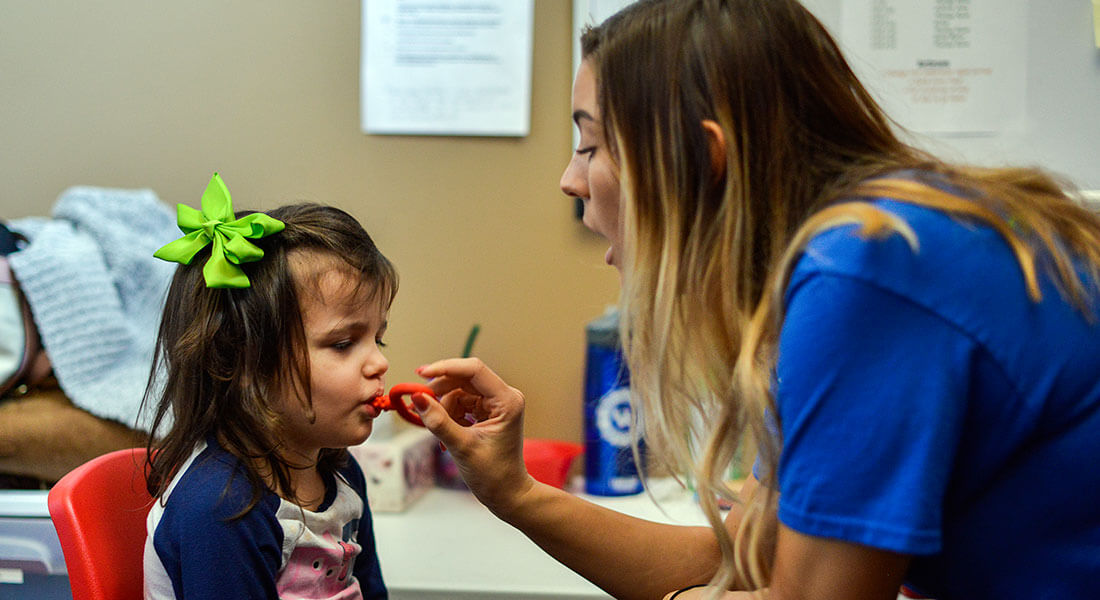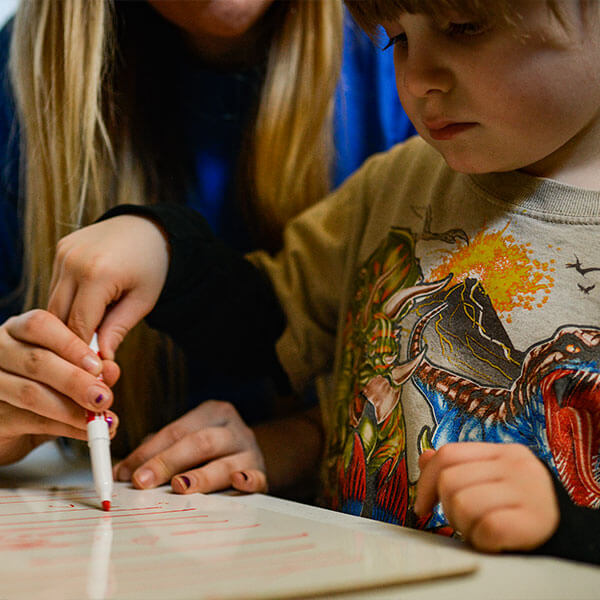What is Pivotal Response Training? Learn from a Hopebridge BCBA Series
July 17, 2018
July 17, 2018

The accomplishments of children at Hopebridge do not stem from only one method. The interdisciplinary model provides opportunities to reach children with autism through various angles, including a number of strategies and concepts that go into the core of our programs, applied behavior analysis (ABA).
Pivotal Response Training (PRT) is one of these practices families will hear. In order to understand the benefits of PRT and how it can affect your child’s life, we turned to Hopebridge Board Certified Behavior Analyst (BCBA) Martin Myers, from our Fort Wayne center in Indiana. He explained the ins and outs of PRT as part of our blog’s “Learn from a Hopebridge BCBA” education series, plus shares some tips on how you can get involved to maximize its impact.
Pivotal Response Training, sometimes referred to as Pivotal Response Treatment, takes a behavior-analytic approach to target verbal communication, social interaction and ultimately, independence. It falls under the ABA therapy umbrella, but organizes the concepts in a particular fashion. In order to teach certain pivotal behaviors, we break it down into four categories:
All in all, PRT is geared towards independence, as with all ABA. We start by finding a plethora of ways to motivate a child and give multiple cues. Once they get to the point where they can manage themselves, that’s huge, even if they have to rely on checklists. The best part is when they begin to interact with others.
Pivotal Response Training covers a broad population and is effective with learners along the spectrum who are looking to communicate verbally and excel at social interaction. From an evidence-based perspective, PRT is used with children toddler age through the middle teenage years, but a lot of the strategies can work with kids older than 15 as well.

Pivotal Response Training breaks down into the following categories: Motivation, Response to multiple cures, Self-management, and Self-initiation in social settings
When it comes to verbal communication, PRT is most successful when implemented before the age of 5, which is true with most any type of learning. By beginning intervention before the age of 5 and using motivational techniques like this, research shows 85 to 90 percent of children with autism are going to develop verbal communication to some degree. This dramatically increases the likelihood that a child will be able to communicate vocally in some way, shape or form. It also lessens the probability that a child will engage in social avoidance and decreases the likelihood of stereotypy.
Elements of PRT – like self-management and social interaction – highly correlate to an individual’s well-being. Incorporating it into therapy is crucial, but caregivers play a significant role in the process. Here are two key ways you can get involved to help guide your child’s progress and the entire family’s overall happiness.
Keep in mind where you want your child to be in 10 years.
If you want to watch your child succeed, parents have to be honest about where you want them to be. Determine the end goals you want reached, so when your child is an adult, there are things they can derive joy from in life. To put our learners on the right path, below are some guided questions you can ask yourself.
Do I want to see my child …
Start with what you feel is important for your child and share it with the therapy team. The beginning stories can be geared towards this and the practice can be molded and enhanced over time.
Figure out the different ways your kid becomes motivated.
Get creative and work to see outside the normal “rewards.” This is important for both families and their clinicians, as you may have to look a little closer at what you see in front of you. For instance, we often hear that a child’s only incentive is a tablet, but I bet if you moved that tablet into another room, that kid’s new motivation would be to leave the room in order to reach it.
Remember, reinforcers are not always tangible. Pay close attention to what they enjoy. Sometimes it’s a tone of voice, other times it’s working really fast to get something finished. Whatever it is, this will be the secret to whether they do a good job or need an extra hand.
In my experience working with kids with autism, there is one goal from my PRT practices that stands out, and it was a really cool, cultural experience for the family. The boy was 8 years old and came from a devout Catholic family, where First Communion was a big deal. His parents asked us, “can you teach him how to go to church?”
After a couple years working with this child, we were able to move past the stages of finding what motivated him and he could successfully respond to multiple cues. He had scripting behaviors and stereotypy, but began to manage himself with those as well, so we started taking him into the community to work on social initiation. We taught him the appropriate interactions that should occur during this time period at church. We also led the family in how to guide him. These situations are quite different than going to school or a store. We had some funny moments, but it was also very personal and meant the world to his family.
He eventually received his First Communion during a small ceremony with about a dozen people and I was there to witness it. Now going to church together on Sundays has become a dream come true for this family!
Want to make your own child’s and family’s goals a reality? If you’re interested in learning more about Pivotal Response Training and other ABA strategies to help your child lead the best life possible, get in touch with us online to find a Hopebridge center near you for a tour.
*Informed consent was obtained from the participants in this article. This information should not be captured and reused without express permission from Hopebridge, LLC.
Autism Therapy
January 24, 2022
What the Increased Prevalence of Autism in Children Means for Your Family